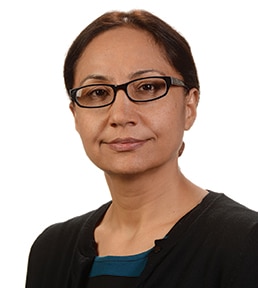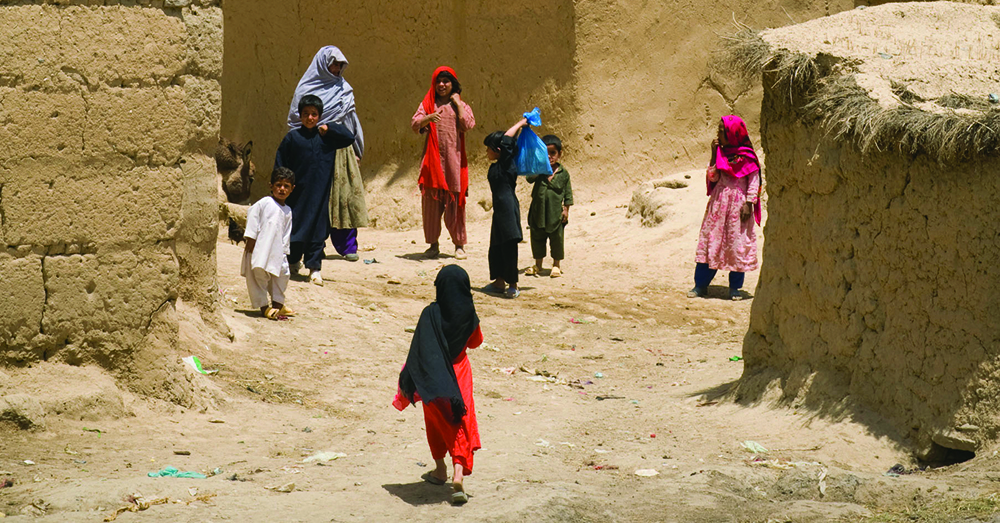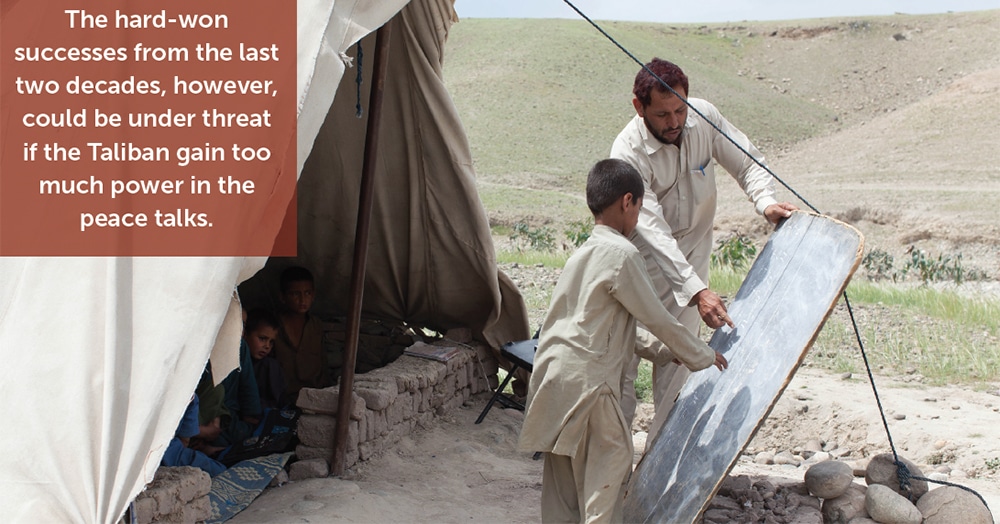What's at stake in the Afghan Peace Process? An expert shares her view.
By Belquis Ahmadi, Senior Program Officer at United States Institute of Peace

Belquis Ahmadi
In Afghanistan, one of the most significant gains made in the past two decades has been the increase in girls’ access to education.
While the focus has been on the numbers of girls gaining access, little has been said about the change in people’s attitude toward girls’ education.
Attitudes towards education have changed over the years. There are numerous examples of Afghan men donating their land to build schools for girls, fathers walking several miles a day to accompany their daughters to school, and fathers demanding better education for their children—sons and daughters.
Youth in urban locations enjoy greater access to information and better-quality education. In most rural areas, however, people are still struggling to give their children access to quality education. The reasons are multiple, but the main barriers include lack of schools and threats against teachers and female students by the Taliban and ISIS.
Afghan children are thirsty for education and so are their parents, including in some strictly conservative areas. Khost province is an example of how progress is happening.
Early this year, Khost, a conservative province and the birthplace of the leader of the Haqqani Network, a militant group, made news headlines when elders, religious actors, and youth (all male) from Shamal district issued a statement in which they called on district residents to send their children to school. “Those disobeying the order will be fined 100,000 Afghani ($1,300).”

Lemar, a local business¬man said, “It is not so much about the amount, it is about publicly shaming those who disobey the elders’ deci¬sion as, in addition to the ‘fine,’ the violator will also face isolation and other restrictions.”
It took several years of diplomacy and advocacy by multiple factions to finally get the elders’ approval and support for the education of both girls and boys. Women of all ages and backgrounds have been the silent, per¬sistent advocates for educa¬tion. Young educated men in the province, Afghans who had migrated to oth¬er countries like Iran and Pakistan and later returned to Afghanistan, and young Khosti men who worked as laborers in gulf countries also have been pushing for access to education for girls and boys.
This is how it all started, but not where the move¬ment ended. Last year, the elders from several villag¬es within Shamal district reached out to the govern¬ment-appointed administra¬tive governor of the district demanding financial and material support to build a school. The district governor promised to build a school with a few conditions: Land had to be donated by locals and people had to take re¬sponsibility for ensuring the security of the school build¬ing as well as the security of the students, teachers, and school officials.
On January 24, 2020, some 100 people—including 50 tribal elders, 40 youth, and 10 religious actors—in the presence of the district governor of Shamal, held a jirga, or assembly, to discuss the need for more schools in the district. After several hours of debate about the importance of education and the link between education, economic prosperity, and the eradication of poverty, the district leaders signed a letter pledging their support to facilitate education for all children.
Knowing that villagers would prioritize boys’ schooling over that of girls, advocates for equal education decided to establish an informal school for girls. Since its opening, 250 girls have enrolled. The students are taught by volunteers, all of whom are men, as there are no female teachers in the district. The next step is to register the school as an official government-run school.
Since the agreement became public early this year, prior to the COVID-19 lockdowns, several women’s rights activists and groups launched a door-to-door campaign to raise awareness about the importance of education for girls. Zainab, one of several women’s rights activists who traveled to various villages, spoke with men and women, encouraging them to send their girls to school. Zainab said that she had prepared for the worst. She didn’t know what the reaction would be from the public.

“The support I received from families was unbelievable,” she said. “The strongest advocates are grandmothers. There has been no hesitation for girls’ education. Their main concern is lack of female teachers and easily accessible school buildings.” In unfamiliar neighborhoods, the elders accompany women like Zainab who are making the house calls.
“I’ve received so many calls from men, even from those Afghans who work in gulf countries, asking me to talk to their families to allow their female family members to attend school and literacy courses. People are hungry for education,” said Zainab.
Afghan women have fought hard to get the support of their families and communities to continue their education as well as to be able to earn an income. The hard-won successes from the last two decades, however, could be under threat if the Taliban gain too much power in the peace talks. Girls’ education and women’s rights, in particular, are under threat. Women make up more than 50% of the population, and youth (people below the age of 25 as defined by the UN Population Fund) make up 63%. Their needs and concerns must be taken into consideration by the Afghan government and the Taliban in any agreement over a political settlement.
There are some in the international community who claim that the Taliban have changed and if returned to power, either in full or in part, they will not impose harsh restrictions on girls and women like they did when they were in power in the early 90s. As much as Afghans want to believe that, they do not share the same level of optimism expressed by those in the international community.
As recently as this August, and despite promises to permit girls to be educated, the Taliban prevented some 200 female high school graduates from Mah-e-May and Nusay districts of Badakhshan province from taking the university entrance exam. The exam determines which students are admitted to public universities.
The students were traveling to Shekay district where the exam was taking place. The Taliban threatened to impose a fine in the amount of 40,000 Afghani (equivalent to $520) on each student if they attempted to participate in the exam.
For the next several days, the female high school students, along with their male relatives, staged protests against the Taliban’s action, demanding the government make an exception and allow those students who were prevented from taking the exam to take it at a new location on a different day. Eventually, the government relented and transported the students to Shaghanan district to take the exam.
The Taliban must understand that today’s Afghanistan is not the same as the country that they ruled in the 90s. Afghans today are willing to risk their lives for education and for the rights of women. If they truly wish to negotiate a sustainable peace, the Taliban must recognize and uphold the rights of all Afghan citizens and be willing to accept the inclusion of women and marginalized groups in the peace process.
WOMEN AND YOUTHS MUST HAVE A SAY IN THE PEACE PROCESS
In 2018, amid record levels of violence between the Taliban, the Afghan National Army, and U.S. troops, Afghan President Ashraf Ghani asked the Taliban to enter into peace talks with the government. The Taliban declined, but since that time there have been steps taken towards peace. These steps, including bilateral talks between the United States and the Taliban, have left Afghans feeling cautiously hopeful that the conflict, which began in 2001, might be drawing to a close. However, there are still many people harboring doubts. If the negotiations do result in peace, will it be sustainable or will the country be thrown back into the dark ages?
Education and women’s rights are two hot topics for Afghans. They want to ensure that if the Taliban is included in power sharing or given decision making authority, education and women’s rights will be protected. With mostly men negotiating, women are worried. They know that women, especially educated women, are important to the nation’s future and crucial in maintaining peace. “An educated mother will not allow her son to join terrorist and illegal armed groups. She will have more control over her children’s discipline than a mother who cannot read or write,” said Guljan, a female doctor from Zabul province. (Note: Her name has been changed to protect her identity.)
Guljan went on to describe why educated women and youth living in the provinces are more concerned about the return of the Taliban than women and youth living in Kabul. “I don’t think the Taliban will be as restrictive in the cities as they were in the 90s, as they know they will be watched by the media and the international community. But in the rural areas, they will intensify the implementation of their version of Sharia (Islamic law based on the teachings of the Qur’an and the traditions of the Prophet Muhammad), and some in the conservative communities will most likely side with the Taliban when it comes to women’s rights.”
It’s taken a great deal of hard work to achieve so much progress in women’s rights and girls’ education over the past two decades. People’s long-held beliefs had to shift. Men and boys had to change their attitudes toward women and girls. Community members had to make demands and protest when their demands were denied. But all that progress could be lost in the blink of an eye if the Taliban regain power. That’s why it’s crucial for more communities, particularly in rural and remote areas, to promote education, just like they did in Khost province. And it’s also crucial for all of us to give these communities the resources and support they desperately need to succeed.






